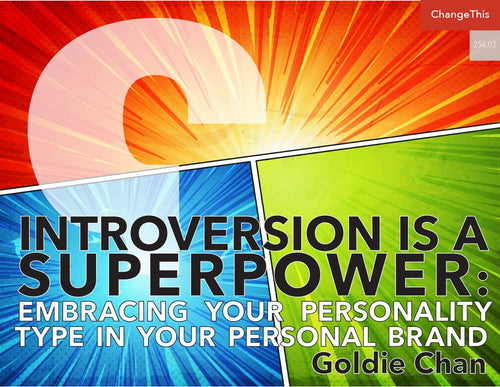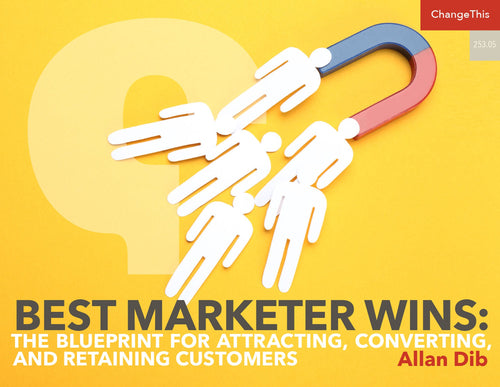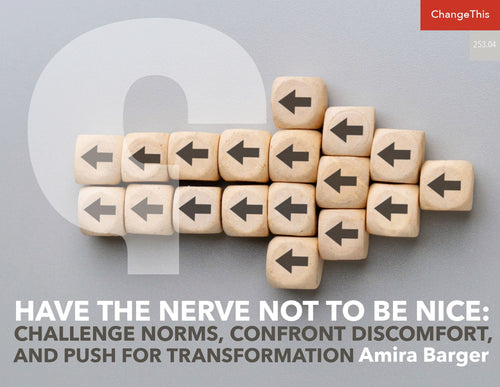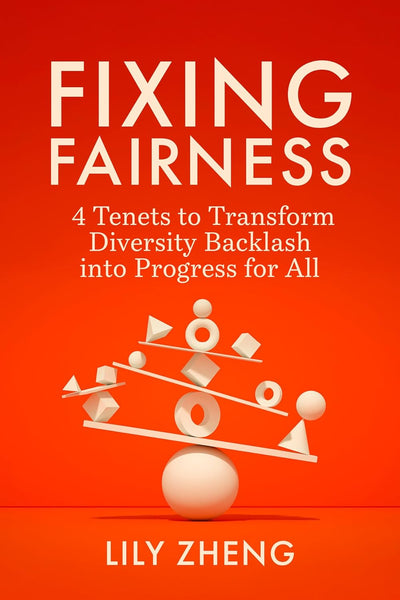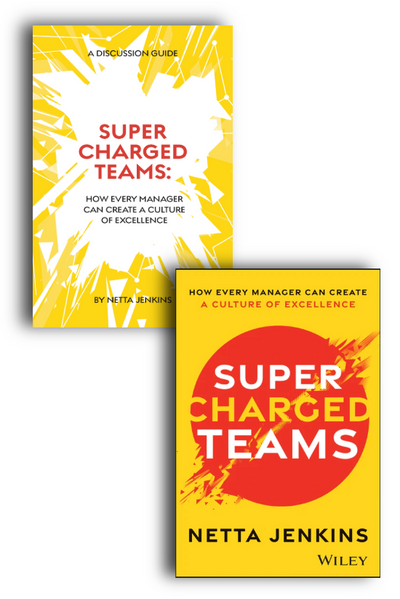Co-opting Self-Care: How a Concept from Community Activism Became So Self-Absorbed
"Self-care" is a term with deep roots, one that once focused on the self-preservation of systematically oppressed people and communities. A multibillion-dollar wellness industry has taken the term and turned it into something we buy for ourselves. Award-winning journalist Amy Larocca explores the history of self-care and if the concept has become overly self-indulgent today.
In 2021, The New York Times invited readers on a “7 Day Well” challenge. Day 4 was devoted to self-care: “What’s the most important lesson of pandemic life?” Tara Parker-Pope asked. “I would argue that it’s this: Self-care isn’t selfish … one of the challenges of 2021 will be to continue making self-care a priority once the pandemic has passed.” The first suggestion was to give the “best hours” of the day to yourself. “Giving yourself time every day to focus on your personal goals and values is the ultimate form of self-care.”1
Before the late sixties and early 70s, self-care was a term used mostly inside the medical profession to determine what level of independence was possible for vulnerable people (the elderly, the disabled, the mentally ill). Could they bathe themselves, prepare a meal, hold a job, hold a fork? It was a diagnostic tool with little implications for the mainstream population. Self-care, then, was literal health care; all the rest—manicures, massages, cleansing breaths of sea-air—was grooming, or vacation, or something else entirely.
During this time “self-care” also expanded to include people who work in high-risk and emotionally difficult professions, like EMTs, doctors and nurses, clergy. It was considered a necessary practice for care-givers to be able to do their jobs: a hospital chaplain who works largely in palliative care, for example, might require a constant monitoring of her emotional state in order to remain of service.
With the rise of the feminist and civil rights movements came the question of who was administering care, and who was getting it. Women or minorities were not the answer to either question.
In 1971 a woman named Carol Downer was working with a Los Angeles chapter of National Organization for Women, or NOW. She had six children of her own and had also endured a painful and illegal abortion while going through a divorce: a traumatic event that led to her becoming active in the pro-choice movement. Through NOW, Downer joined a group of women on a visit to a man named Harvey Karman in Los Angeles where he was (illegally) providing abortions using a “menstrual extraction” technique that was far safer for women than the scraping that was common in unprofessional procedures, and that could result in infection and death.
During that visit, it occurred to Downer that, after the six children and the abortion, she had absolutely no idea what her own cervix looked like. Downer decided to “borrow” a plastic speculum from Karman’s clinic. She brought it home and, with the help of a mirror and a flashlight, took a good long look inside. How miraculous, she thought. And: why have I never looked at the entirety of own body before? Downer was soon demonstrating—often to dozens of women at a time packed into a small feminist book-store—and considering which aspects of care and which procedures they might begin handling safely themselves. Downer and her group began performing exams on one another—they were not doctors, but they learned how to tell if something was not right. Most crucially, they were committed to treating each other with dignity and respect.
In 1970s in America, 93% of OB/GYNs were men.2 Downer and her partners believed that women knew intuitively how better to care for themselves and each other, and that they were better equipped to take each other’s concerns and complaints seriously. As they began helping one another with routine matters like yeast infections and more complicated ones, like the menstrual extraction technique for abortion, her theory was proven correct. They called this self-care, too.
Downer and another woman named Lorraine Rothman opened the first self-help clinic—the Feminist Women’s Health Center—in Los Angeles and then took the clinic on the road, traveling across the country with a box of speculums marked “Toys,” teaching women how to examine themselves, and about procedures like menstrual extractions.
In 1972, during a police raid of the health center, Downer was arrested in what was called “The Great Yoghurt Conspiracy” (they were using yogurt to treat yeast infections) for operating without a medical license. A jury chose to acquit, and soon after, when Roe v. Wade made abortion legal in America, Downer wasted no time: within 60 days the Women’s Health Center Clinic in LA reopened and was soon providing abortion services.
Some aspects of the self-care movement, like female reproductive health practitioners, have been absorbed into the mainstream: in 2018, 82% of OB/GYNs placed in hospital residency programs were female.3
Around the same time that Carol Downer and Lorraine Rothman were traveling the country in a Greyhound bus, the Black Panther party, which sponsored a series of initiatives to fill the gaps left by the US government when it came to caring for the poor and oppressed, was operating a series of “survival programs”—the idea was that the failure to provide adequate nutrition and medical care to a significant portion of the population meant that that population was unequipped to fight back, to provide meaningful resistance against a system that was doing active and nefarious harm.
A poster released by the Berkeley California chapter of the Black Panthers read: “A person’s health is their most valuable possession. Improper health care and inadequate facilities can be used to perpetrate genocide on a people. The present fascist, racist government used its facilities for that purpose—the genocide of poor and oppressed people. The people must create institutions within our communities that are controlled and run by the people in order to insure our survival. With this in mind the Black Panther Party announces the opening of our first Free Health Clinic in the Bay Area.”4 The text was accompanied by a drawing of a young, black child clutching a doll while an attentive, black doctor bandaged his arm.
Central to both movements was the notion that women—and particularly poor and non-white women—are frequently put in the caregiver position, with her own needs coming last.
The staff at the Panther clinics were volunteers, and they could be fired by their patients. The volunteer physicians were also required to undergo a form of reeducation—The BPP felt that any individual in a position to receive a medical degree could not understand the struggles of the people they were treating, so they provided a reading list that included works by Mao Zedong, Che Guevara and Frantz Fanon.
When Arline Geronimus, who is now a public health professor at the University of Michigan, was a student at Princeton Univeristy in the late seventies she had a part-time job at a school for pregnant teenagers in Trenton, New Jersey. The students were mostly minorities, and they were all poor. Geronimus began to notice the ways—big and small— that the students’ health differed from that of her classmates at Princeton. Although the school treated their pregnancies as “the problem,” Geronimus began to see it differently: the pregnancies, she realized, were often welcomed by the girls. The problem was the acute stress of living every single day with the problems of racism and poverty. Geronimus went on to study the long-term health effects of chronic poverty and racial discrimination on women in the United States and coined the term “weathering,” which describes the cumulative effect of all this stress on the women (and men) who endure it.
What self-care was for, according to Geronimus and others, was preserving health and selfhood in a world designed to strip people like her teenage students of both. In a 1986 collection of essays that were written largely while she was fighting the cancer that would kill her, the poet and activist Audre Lorde wrote, “I respect the time I spend each day treating my body, and I consider it part of my political work.”5
In the epilogue, Lorde writes: “Sometimes I feel like I am living on a different star from the one I am used to calling home. It has not been a steady profession. I had to examine, in my dreams as well as in my immune-function tests, the devastating effects of overextension. Overextending myself is not stretching myself. I had to accept how difficult it is to monitor the difference. Necessary for me as cutting down on sugar. Crucial. Physically. Psychically. Caring for myself is not self-indulgence. It is self-preservation, and that is an act of political warfare.”6
Of course, it can seem funny that this once overtly-political language is being used to sell massages and manicures, fluffy slippers and expensive sweats.
When “self-care” began to enter the cultural lexicon, Americans outside the medical world were far more familiar with self-help, with Who Moved my Cheese? and seminars where one can walk on hot coals towards a better, happier (and usually richer) life. Self-help implies the process of pulling oneself, hand-over-hand, to a higher position in the social or economic order, or even just to safety on a different shore.
Self-Help has a long and robust American history, beginning with the publication of Samuel Smile’s Self-Help in 1859, which opens with the phrase “Heaven helps those who help themselves,” which was really just a slight variation on “God helps them that help themselves,” included by Benjamin Franklin in his Poor Richard’s Almanac a hundred years before that. It was a maxim that would pave the way for success for people like Dale Carnegie, whose How to Win Friends and Influence People was first published in 1936, and Napoleon Hill, whose 1937 publication of Think and Grow Rich proved its own point by doing what it promised, for its author, at least. The idea was that you could maximize your productive capacities: Speak louder, shake hands with more of a bone-crunching grip. Sleep less, do more. Win. Alcoholics Anonymous, which was founded in 1935, also started picking up steam around that time, largely because its method of treating alcoholism with a combination of spirituality, community and talk was turning out to be more successful than any hard-medical intervention. It’s the combining of these two disparate ideas that gives us wellness: that one could control one’s health in an active, participatory way.
The new, wellness definition of self-care is a hybridization of the self-care and self-help more than it is exactly one or the other. What Geronimus began to notice, as self-care began to be co-opted by the wellness and beauty industries, was how recklessly the term seemed to be used.
“I think for the first time you have people who are very privileged for whom it is a very new thing to feel marginalized,” Geronimus says now, “or who don’t understand for the first time in their lives how the world could be going the way it is, using these words,” she said. “Self-care was never about “avoiding triggers,” or about “I deserve this,” it was about finding protection from a world that was really harming me. It’s not I’ve had a crazy stressful day so I should go get my massage, or I don’t know how Trump got elected and I can’t take it anymore so maybe I should get a facial.”
Audre Lorde’s assertion that “Caring for myself is not self-indulgence. It is self-preservation, and that is an act of political warfare” is one of the most retweeted, Instagram, quoted and misquoted texts in this entire community. The truth is, many instances of what is now considered self-care are not, in fact, acts of political resistance or rebellion at all.
Today, still, the biggest risk factor for poor health in America is belonging to a marginalized group. A 2015 report on health care equity from the Urban Institute and the Center on Society and Health at Virginia Commonwealth University noted, “The greater one’s income, the lower one’s likelihood of disease and premature death.”7 A Kaiser Family Foundation study concluded that the death rate for Black Americans due to Covid was 1.6 times higher than white Americans.8 According to the CDC, in 2021, Black women are three times as likely as white women to die in childbirth. These disparities exist regardless of their socioeconomic status.9
There is some vague pay-it forward notion attached to a lot of so-called self-care. The maxim goes that self-care isn’t selfish, but it can be. If Lorde’s argument is that when an individual who has been systematically neglected by society at large rejects this paradigm and elects to care for herself, it can qualify as a radical, and even subversive position, what is it when a wealthy white woman does so?
Ivanka Trump writes with regret about her failure in “treating myself to a massage or mak[ing] much time for self-care” during her father’s first presidential campaign in her book Women Who Work.10 As part of her publicity blitz, she tweeted “self-care is not selfish.”
In spite of what the sandwich board outside my local nail salon reads (“take some time for self-care, you deserve it!), many manicures and other rituals of grooming are not, in fact, particularly political acts and the act of indiscriminately claiming them as such is a bit of a stretch. Sure, everyone deserves to care for herself, but acts of hygiene and grooming needn’t all be read as political acts, or the entire idea risks becoming a farce.
Excerpted from How to Be Well: Navigating Our Self-Care Epidemic, One Dubious Cure at a Time by Amy Larocca with permission of the publisher, Knopf. Copyright © 2025 by Amy Larocca. All rights reserved.
About the Author
 AMY LAROCCA is an award-winning American journalist. She spent twenty years working at New York magazine as both fashion director and editor at large. Her writing has appeared in The New York Times, Vogue, Town & Country, and the London Review of Books, among other publications. She lives with her family in New York and North London.
AMY LAROCCA is an award-winning American journalist. She spent twenty years working at New York magazine as both fashion director and editor at large. Her writing has appeared in The New York Times, Vogue, Town & Country, and the London Review of Books, among other publications. She lives with her family in New York and North London.




